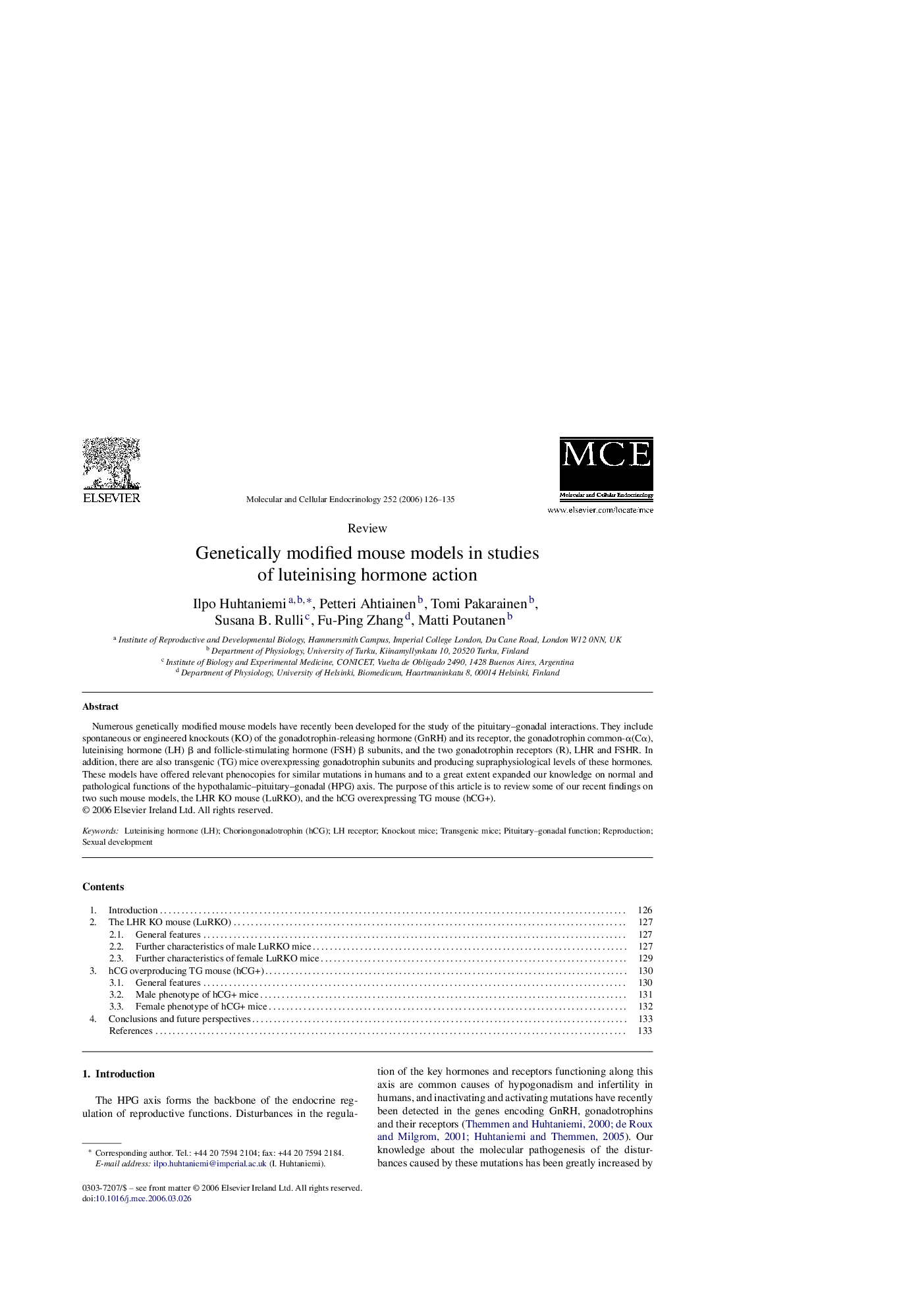| کد مقاله | کد نشریه | سال انتشار | مقاله انگلیسی | نسخه تمام متن |
|---|---|---|---|---|
| 2198214 | 1551005 | 2006 | 10 صفحه PDF | دانلود رایگان |

Numerous genetically modified mouse models have recently been developed for the study of the pituitary–gonadal interactions. They include spontaneous or engineered knockouts (KO) of the gonadotrophin-releasing hormone (GnRH) and its receptor, the gonadotrophin common-α(Cα), luteinising hormone (LH) β and follicle-stimulating hormone (FSH) β subunits, and the two gonadotrophin receptors (R), LHR and FSHR. In addition, there are also transgenic (TG) mice overexpressing gonadotrophin subunits and producing supraphysiological levels of these hormones. These models have offered relevant phenocopies for similar mutations in humans and to a great extent expanded our knowledge on normal and pathological functions of the hypothalamic–pituitary–gonadal (HPG) axis. The purpose of this article is to review some of our recent findings on two such mouse models, the LHR KO mouse (LuRKO), and the hCG overexpressing TG mouse (hCG+).
Journal: Molecular and Cellular Endocrinology - Volume 252, Issues 1–2, 27 June 2006, Pages 126–135